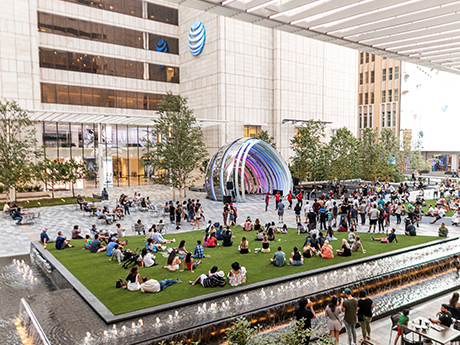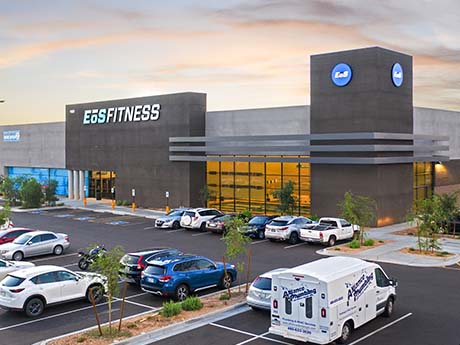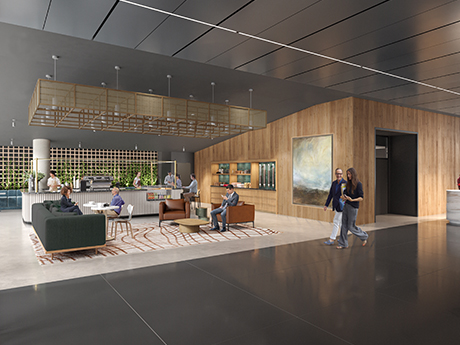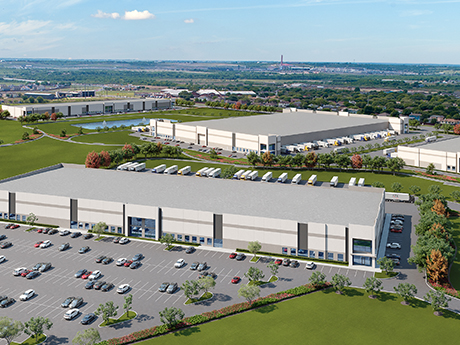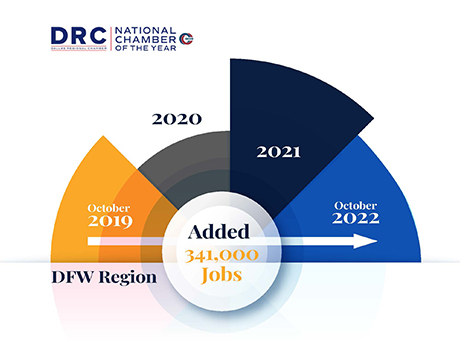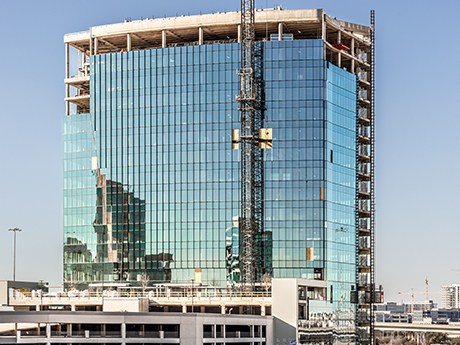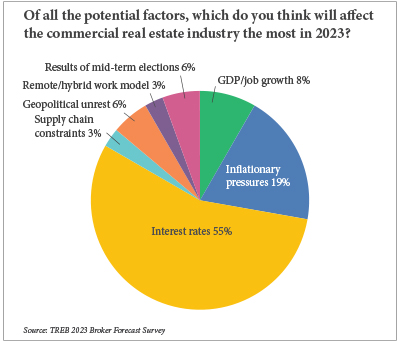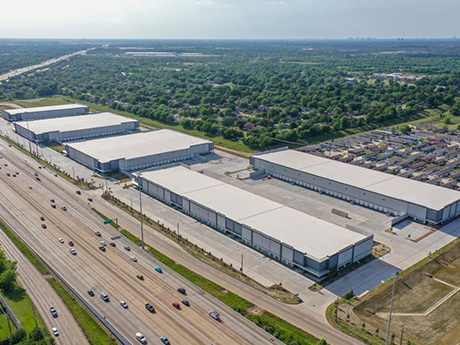By Taylor Williams North Texas is attracting new and existing entertainment concepts at a frenetic pace as operators of these facilities seek to position themselves squarely in pathways of major growth and capitalize on any remaining pent-up demand from the pandemic. According to a 2022 report from the North Central Texas Council of Governments, the region’s population surpassed 8 million last year. In addition, more than 20 cities in North Texas — the area that includes and surrounds the Dallas-Fort Worth (DFW) metroplex — saw their populations swell by 10 percent or more on a year-over-year basis between mid-2021 and mid-2022. This growth inevitably encompasses key demographics that entertainment operators covet, including families with children and young working professionals. High-paying jobs continue to flow into DFW in the form of corporate relocations and consolidations. Developer KDC recently began construction on Wells Fargo’s 850,000-square-foot regional campus in Irving. New pieces of the PGA of America’s headquarters campus in Frisco are coming on line every quarter and sparking feverish development in surrounding neighborhoods. Global engineering consultant AECOM and construction machinery manufacturer Caterpillar are also in the process of relocating their headquarters from Los Angeles to Dallas, among others. Checking the two boxes …
Texas Market Reports
By Barry Hand, principal, Gensler In a recent tour of a name-brand corporate campus, the host carefully explained to our team that his company’s policy regarding working from home (WFH) and returning to the office (RTO) remained loose as they completed a “year of learning.” This “learning” presumably involved listening to staff, observing who badges in when and where, experimenting with what works and what doesn’t and resolving the best way to get their arms around the most effective policies. This explanation has surely been given repeatedly in recent years. It appears most companies prefer to bring their people back to the office, but they also want to adopt policies that will work best for employees and customers, as well as the future of their organizations. While there are outliers that have instituted clear return-to-office directives, most firms are adopting change management strategies organized around attracting staff back to the office. They are doing this by leaning on experiences and amenities that demonstrate to employees the benefits of being present in the office. It seems the “experience” around which retail and food-and-beverage establishments are designed has now also reached into the corporate world. The Amenitized Workplace Increasing numbers of …
By Jason Baker, principal at Baker Katz When a national retail or restaurant brand acquires another prominent national name, the move might initially seem to make a great deal of sense — especially when there are clear similarities between the two brands. Ultimately, however, what makes these high-profile transactions successful may turn out to be less about brand synergy and more about market dynamics and commercial real estate leverage. Accepting that premise in turn raises some interesting questions about the role that these types of acquisitions and brand conversions might play in an increasing competitive commercial real estate landscape. Those questions are especially relevant in places like Texas, where retailers looking to expand or move into new markets may view the acquisition and conversion of struggling retail brands as a viable strategy. From fitness concepts to coffee chains, there may be opportunities retailers can leverage to find quality retail spaces in otherwise occupied marketplaces. Some of these acquisitions have already taken place. However, questions remain about how much of a role these conversions may play in Texas markets. The phenomenon is hardly a new one, but it does seem like a noteworthy trend for industry analysts, retailers and brokers alike …
By Taylor Williams Office owners have spent the last two-plus years undertaking every creative measure they can fathom — and afford — to get tenants and their employees to legitimately want to come back to their buildings. From investing in upgrades to physical amenities to hiring hospitality-minded professionals for property activation to offering personalized incentives, nothing has been out of bounds when it comes to recouping occupancy. Enough time has now passed such that owners can judge the extent to which their ideas and initiatives have worked. Of course, the goalposts for what defines success in the office sector have shifted radically during that time. Profit margins and forecasts have shrunk as 60 to 70 percent occupancy three to four days a week now starts to look pretty good, all other factors being held equal. It’s simply a different world. “We are never going back to pre-pandemic ways,” says Ami Figg, senior leasing specialist at Houston-based Hartman. “What COVID-19 has done for the office market is equivalent to what September 11 did for the travel industry. There will always be a need for traditional office space, but it’s changed forever, so it’s upon us as landlord and tenant reps to …
By Taylor Williams The current industrial development landscape in Texas is a true testament to the awesome power of demand — and of interest rate hikes. From El Paso to Houston, industrial users of all sizes and across all industries continue to demand new or expanded spaces to accommodate their ever-growing warehousing, distribution and manufacturing needs. E-commerce, nearshoring, COVID-19 — name your impetus — they’ve all contributed to a feverish pace of industrial development and absorption in recent years. According to fourth-quarter 2022 data from CBRE, Dallas-Fort Worth (DFW) saw an annual supply gain of about 36.1 million square feet in 2022 while posting positive net absorption of 36.5 million square feet. Third-party logistics users drove much of the new leasing activity, which contributed to a 4.6 percent vacancy rate at the end of the year. The market has now posted consecutive years of sub-5-percent vacancy. Fittingly, there remains more than 75 million square feet of product under construction throughout the metroplex. In Houston, developers delivered approximately 18.8 million square feet of new industrial space in 2022, per CBRE. Yet the market posted more than 30 million square feet of positive absorption over the course of last year, and the …
By Brett Merz, senior vice president, asset management, KBS Realty Advisors The demand for office properties with amenities that reflect an awareness of environmental, social and governance (ESG) principles is growing as a result of younger generations joining the workforce and investing. A recent study by CNBC Make It found that one-third of millennials in the United States place a high focus on investment products with ESG factors. This tendency naturally extends to the places where they work. In fact, 47 percent of 18- to-34-year-olds in the United Kingdom say they would look for a new role if they thought their employer was not committed to the cause. This finding demonstrates that ESG is becoming an essential part of recruitment and retention — particularly among younger workers. Since millennials and gen Zers make up the majority of today’s workforce, ESG is becoming a rising concern among office owners. In the growing markets of Dallas and Austin, businesses are now seeking office spaces that offer eco-friendly features to help attract and retain employees. As a large investor in top-tier commercial real estate, KBS has seen how these amenities can benefit office investors. This is one of the reasons we created an …
By Kent Elliott, principal, and Chase Fryhover, director, RETS Associates While December’s national jobs report painted an optimistic picture of the employment landscape, some sources have noted that workers in commercial real estate are leaving the industry. Yet although some national brokerage firms may be trimming the fat to cut costs in light of recent economic uncertainty, this trend does not seem to apply to Texas-based commercial real estate companies. In fact, according to Estateserve, with the Texas office market booming, vacancy rates dropping and rents rising, “Texas’ commercial real estate is experiencing a resurgence.” As a national executive search firm that has served the industry for more than two decades, RETS Associates has a seasoned perspective on job markets throughout the country. Here are the trends we are noticing throughout the industry in Texas and why we believe the market is poised for ongoing strength and stability. Continued In-Migration Texas is the ninth-largest economy in the world, as well as one of the leading markets in the country in job and economic growth. The Dallas-Fort Worth (DFW) area in particular, the fourth-largest MSA in the country, led the country in population growth in March 2022 and in post-pandemic job …
By Eric Barnes, director of business development at SiteAware Texas has been one of the most attractive states for corporate relocations and sustained construction growth, spurred on by attractive tax benefits, a low cost of living and business-friendly policies. As such, Texas remains well-positioned for a robust and profitable construction economy heading into 2023. According to The Wall Street Journal, Texas cities rank among the fastest-growing in the country in terms of population. This strong population growth, coupled with a robust job market and strategic location, continues to attract employers. In 2021, the state saw a record number of headquarters relocations. Though that figure dipped in 2022 due to the conclusion of state-sponsored tax breaks, the local market remains healthy and attractive to developers and investors. In addition, the slowing down of relocations isn’t necessarily bad because it allows the state to ensure the success of companies already operating in Texas. Regardless of this dip in activity, the heightened need for more multifamily and commercial development continues and has translated to an influx of construction projects within the state. Challenges, Opportunities Texas contractors and developers are looking for better ways to manage construction sites and take on more projects to …
By Taylor Williams If inflation was the story of 2022, then basic economic theory dictates that interest rate hikes and their subsequent impacts will be the featured issue of 2023. For when it comes to whipping inflation, the Federal Reserve only has so many tools in its kit. The nation’s central bank can raise reserve requirements for lenders and sell Treasury notes all day long, but nothing has as direct and powerful of an effect on the monetary supply as movement in short-term interest rates. Simply put, higher interest rates discourage borrowing activity, which reduces the amount of money circulating in the system. In the past 12 months, the U.S. economy has seen no fewer than seven rate hikes totaling 425 basis points, with the Fed indicating that more increases are on the docket for 2023. Much like severe inflation itself, the rate hikes that inevitably follow rampant price escalation tend to touch nearly every facet of commercial real estate. Developers and investors respectively face higher interest rates on construction and acquisition loans. Brokers must adjust prices on properties they’re listing for sale or rent in response to these variables. End users tend to be somewhat insulated from these impacts, …
By David Ebro, president of Levey Group Despite the nearly 6.4 million square feet of new project starts during the fourth quarter of 2022, which grew the volume of Houston’s industrial space currently under construction to 33.5 million square feet, the market posted a record 30.3 million square feet of net absorption for the year. This activity drove Houston’s vacancy rate down to 3.8 percent — a decline of 220 basis points from the end of 2021. The remarkable growth throughout the Houston MSA — the nation’s fourth-largest metropolitan area — has developers racing to find buildable sites both within and beyond the city limits. As a result, industrial development is bulging out of the city and into submarkets such as Baytown, Richmond and Brookshire as developers pursue more economically feasible land among these growing population centers. Beyond favorable land opportunities, Houston’s outlying submarkets offer the workforces that tenants require for their warehouse and distribution operations. These growing submarkets are also generating an increasing amount of demand from e-commerce users in the consumer goods sector. Record Growth East of Houston Much of the industrial growth can be found east of town, near and along the Houston Ship Channel. For the …



